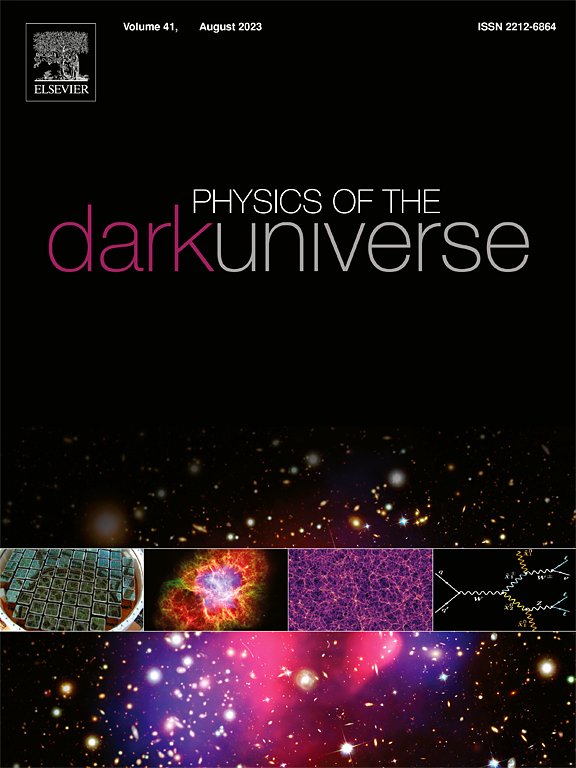Possible existence of traversable wormholes within stellar galactic halos in modified f(R) gravity: A class 1 embedding approach
IF 5
2区 物理与天体物理
Q1 ASTRONOMY & ASTROPHYSICS
引用次数: 0
Abstract
The present manuscript explores the novel implications of the potential existence of static, anisotropic, and spherically symmetric wormhole spheres within the dark-matter halos of elliptical galaxies in the framework of modified gravity theory. To achieve this objective, we first derived the spacetime solution employing the Tolman-V ansatz as the solution for the gravitational redshift function. In addition to this, we applied the well-known Class 1 Karmarkar condition to determine the wormhole shape function as another metric potential. Subsequently, these solutions were combined with a dark-matter galactic density profile resembling the de Vaucouleur’s model to derive the matter components of the modified field equations. We focus on three popular and cosmologically viable gravity models: , , and . To validate the physical acceptability of our wormhole space–time solutions, we performed a graphical analysis for these gravity models. This analysis examined various constraints, such as the viability of energy conditions, stability via pressure anisotropy and the modified TOV equation, consistency through the volume integral quantifier, and credibility via total gravitational energy. In particular, for minimal values of the free parameter and fixed values of other constants, we observed a small amount of exotic matter near the throat of the wormhole, evidenced by limited violations of the energy conditions. This suggests that the modified gravity framework serves as a promising alternative to support wormhole structures with negligible exotic matter. In conclusion, our proposed solutions satisfy the essential requirements for configuring wormhole structures within the dark-matter halo regions of elliptical galaxies, providing new insights into the potential interplay between modified gravity and galactic dark-matter distributions.
求助全文
约1分钟内获得全文
求助全文
来源期刊

Physics of the Dark Universe
ASTRONOMY & ASTROPHYSICS-
CiteScore
9.60
自引率
7.30%
发文量
118
审稿时长
61 days
期刊介绍:
Physics of the Dark Universe is an innovative online-only journal that offers rapid publication of peer-reviewed, original research articles considered of high scientific impact.
The journal is focused on the understanding of Dark Matter, Dark Energy, Early Universe, gravitational waves and neutrinos, covering all theoretical, experimental and phenomenological aspects.
 求助内容:
求助内容: 应助结果提醒方式:
应助结果提醒方式:


